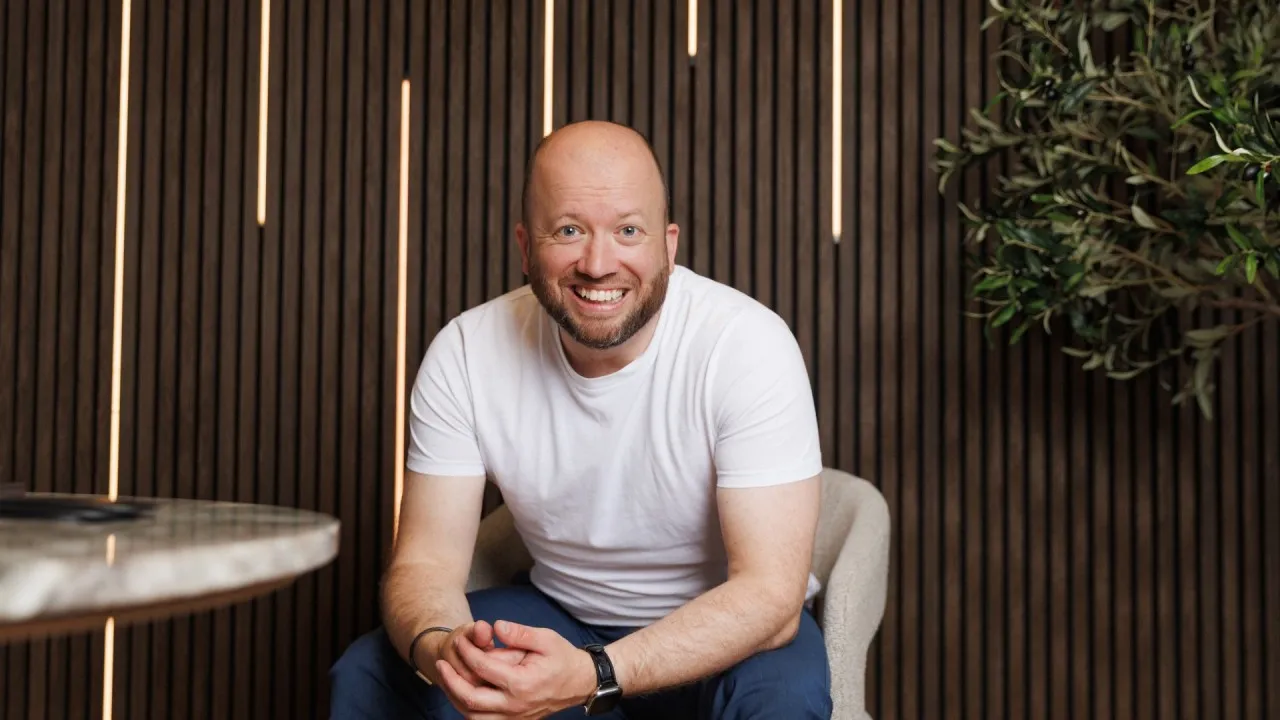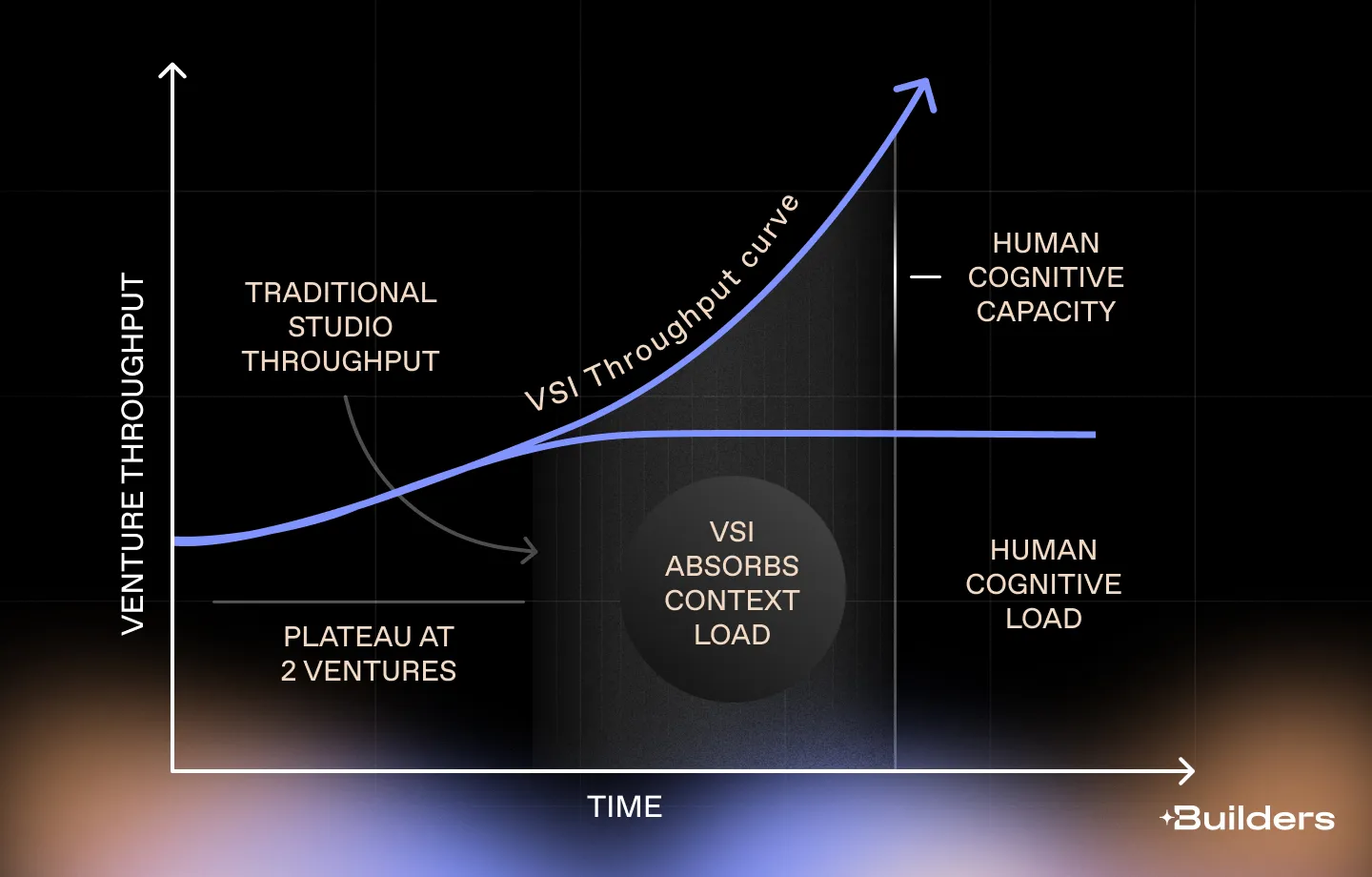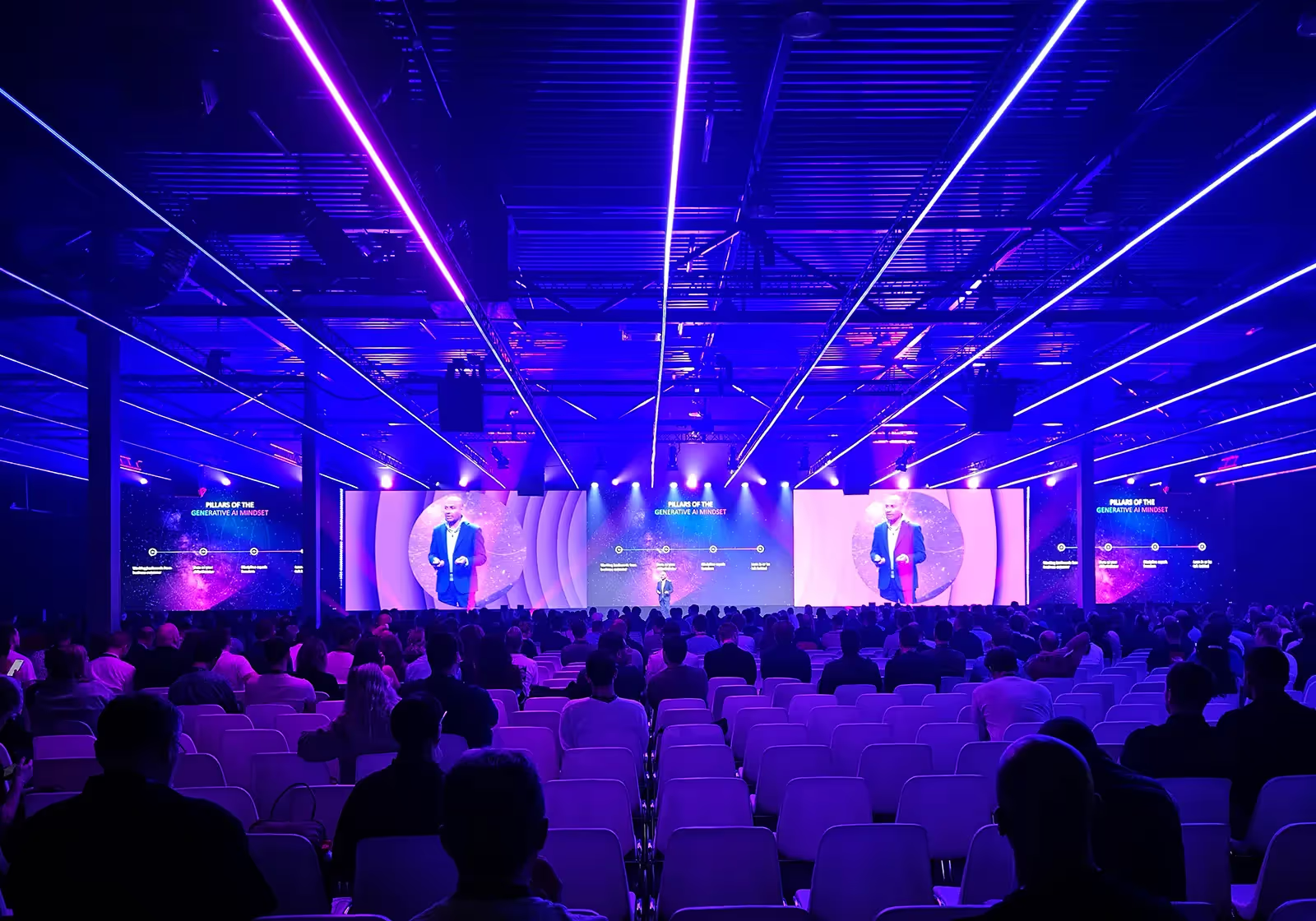Why Venture Studios don’t scale, and how we’re automating the venture partner
Startup Studio
6 min
24 Nov 2025
Venture studios don't scale because context fragments across people. Every success adds weight. We're building a system that logs, connects, and compounds studio intelligence so partners multiply momentum, not overhead.


Intro
Recap
Business idea scope
Venture studios are supposed to be the closest thing to a company-building machine: infinite velocity, infinite experiments, infinite upside. The reality? They choke the second they start working too well. Scale in a studio isn’t additive, it’s gravitational. Every success increases the weight.
The faster you move, the heavier everything gets; systems, founders, even partners. It’s the paradox no one likes to admit. The thing that makes the model powerful, being hands-on, is also what caps it. It’s not the ideas that burn you out, it’s the compounding context.
We’ve built ventures, shut them down, raised funds, burned through them again. The pattern’s always the same. The moment a studio reaches graduation velocity, one portfolio company breaking out every year while launching three more, that’s also when it’s gasping for air. Every studio that matters hits this point right around the time they run out of runway. Ours too. Even studios have to raise, and when you’re busy financing the machine, you stop feeding it real insight.
That’s when it turns. You stop learning from the portfolio and start learning how to survive your own structure.
The real constraint: Partner bandwidth
At some point, we did what every studio eventually does, we started hiring extra venture partners. On paper, it made sense. If two people can run one or two ventures at a time, adding more partners means more output, right?
That’s what we thought too.
Sharon and I can each run one, maybe two ventures in parallel. We know every moving part by heart, the founder, the market, the pitch, the next three moves. It’s heavy but doable. Where it breaks is the moment one venture hasn’t fully graduated and the next is already coming in hot. That overlap kills momentum.
It’s not the work. It’s the context. People can run multiple things at once, and venture partners especially are built for chaos. We can juggle decks, founders, markets, and crisis calls within the same afternoon. But what you lose isn’t capacity, it’s headspace. The breathing room to see the non obvious thing that gives you an edge. The ability to make the decision others don’t even notice yet. The extra step that only shows up when your mind has space to roam.
So, we added partners to balance the load. And that’s where things went sideways.
When you bring new venture partners into the mix, you don’t just share the work, you fragment the narrative. Context starts travelling through more brains, more meetings, more notes, more just to be sure check ins. Each partner carries a slightly different version of the truth, and that’s when you start losing speed.
It’s not incompetence, it’s physics. Every added person introduces latency.
We realised this isn’t about how much work you can handle, it’s about how much context switching a studio can survive before momentum collapses.
What we tried (and why it broke)
And once you see that context is the real bottleneck, you can’t unsee it. So of course we tried to engineer around it, the way every ambitious studio does.
We hired senior venture builders. Looked great on paper, more operators, more output. In reality? Dilution. They came in with their own rhythms and rewrote the venture mid-flight. Suddenly, we weren’t building ventures, we were managing interpretations of the same one.
Worse, they turned into founders halfway through validation, falling in love with ideas they were supposed to stress-test. That’s fatal. Validation exists to stay objective until conviction is earned. You can spot it instantly:
“Tell me about the last time you reached product-market fit, and your exact contribution.”
Then came the systems thinkers. The playbook optimisers. Brilliant on slides, allergic to chaos. Within weeks, the process became the product, and founders became variables inside it.
Finally, we tried the peer partner route. Someone at our level to run the portfolio while we scaled the studio. Sounded perfect. It wasn’t. Alignment overhead exploded. We spent more time syncing context than building companies.
That’s when it became obvious. The throughput of a studio isn’t determined by the number of hands, it’s determined by the number of brains you’re forcing the same context through. The moment you start copying it across humans instead of connecting it through systems, you lose speed.
Context is the missing infrastructure
You can have all the ambition in the world, it won’t matter if your studio forgets faster than it learns. Context is the actual infrastructure of speed.
If it isn’t logged, it doesn’t exist. If it isn’t connected, it can’t compound.
Momentum isn’t magic, it’s just managed context over time.
We were drowning in Notion docs, Slack threads, call notes, all of them fragments of truth that aged like milk. A month later, no one remembered why we killed that hypothesis or what customer said the thing that changed our direction.
And after hundreds of calls, do you honestly believe you can still spot every new pattern while you’re selling, shaping the product, handling CS, and keeping the lights on? Of course not. Context leaks. Insights evaporate. Collective amnesia kills repeatability.
So we overcorrected in the only way that made sense. We logged everything we possibly could.

System of context: Automating the studio
We’d already logged every conversation we had. Thousands of them.
Across ventures, that’s easily 1,000+ founder, customer, and investor calls per build, each packed with nuance that kept evaporating the moment we moved to the next phase.
The first iterations were brute force. We took everything. Transcripts, Notion comments, CRM notes, call summaries. Then we pushed the whole pile through Gemini. Then we layered sentiment analysis, speaker mapping, and clustering on top, just to see what would surface.
It started showing us things we hadn’t seen ourselves. Buying intent. Objection loops. Silent deal-killers. Technographic overlaps between companies we thought were unrelated. Even which founders were actually having commercial conversations and which were just running polite interviews.
At first, we called it luck. Then it kept happening.
- When a model spots the same friction across five ventures in a row, it’s not hallucinating, you are.
- We rebuilt our stage-gates based on what the data said, not what we remembered.
- ICPs changed based on market language. Follow-ups wrote themselves. Customer tone started shaping brand voice.
- Speed doubled. Debates halved.
But data’s only as good as what you feed it. We’re all human so we tend to love logging the positive calls, the “great chat, good energy” ones. Those are almost useless.
The real signal sits in the objections, the rejections, the awkward silences. And it’s not just about founders picking the wrong calls to store, it’s about knowing which moments actually matter. If the system doesn’t surface friction, patterns, drop offs, and dead ends, you can’t optimise, you can only react. Garbage in, garbage out isn’t a saying, it’s law.
That’s when we started turning it into infrastructure. Building the pipes, not just the model.
That’s how VSI, Venture Studio Intelligence, started taking shape (yeah, we didn’t even bother debating the name yet). It’s our attempt to turn the studio into a dataset instead of a diary, a system of context that doesn’t forget.
Every call, note, and decision becomes queryable, structured, and alive. This isn’t note-taking with AI. It’s institutional memory that fights back.
You can ask:
“What changed our conviction on this problem between week 3 and week 8?”
Under the hood, it’s real-time transcription, speaker mapping, semantic scoring, vector linking, and context graphs that show how ideas evolve.
Every decision node connects to evidence. Over time, the studio starts learning how it learns.

Our latest iteration: The next-gen venture partner
We’ve burned through enough partner models to know what doesn’t work. What we’re building now isn’t about replacing partners, it’s about giving them a real engine to run on.
Because the truth is, partners can still be catalysts. They just can’t be the operating system anymore.
The old model ran on memory, personality, and syncs that felt productive but mostly recycled context. The new one runs on data that doesn’t forget.
Partners still make the calls, still bet on founders, still decide when to push or pivot, but now every decision is backed by live context, not gut feel wrapped in hope. When the repetitive labour disappears, what’s left is judgment, timing, and momentum, the things humans are actually great at.
With centralised context, we can finally scale partners without losing DNA.
The system keeps the truth straight. The partner becomes velocity itself, still human, still messy, but powered by something that compounds.
The studio rebuilt around momentum
When you zoom out, the role of the Venture Partner isn’t disappearing, it’s transforming.
Access to systems like VSI changes what “being in the trenches” means. The work shifts from managing chaos to compounding insight.
Does that mean the venture studio role is shrinking? Yes, for the most part.
But that’s a good thing. The access layer is changing.
While everyone’s still debating how to solve the next problem, the real bottleneck of this cycle isn’t discovery, it’s distribution.
And that’s where the partner’s energy should go, into finding the wedge, breaking markets open, and keeping momentum alive.
OUR UNIVERSE

BUILD WITH US
Backing bold founders from day zero — pairing ambition with deep technical leverage, operational firepower to create category-defining companies.
CTO NETWORK
Curated Network for Europe’s to builders — from AI to deep tech. Private events, shared signals, and deep conversations for those who are in it.

OUR UNIVERSE

BUILD WITH US
Backing bold founders from day zero — pairing ambition with deep technical leverage, operational firepower to create category-defining companies.
CTO NETWORK
Curated Network for Europe’s to builders — from AI to deep tech. Private events, shared signals, and deep conversations for those who are in it.

Techno optimist?
Join our CTO NETWORK.
Leverage your deep expertise to craft breakthrough magical solutions.

Got a Venture idea?
Pitch it at Builders.
Are you a future CTO or CEO, sitting on a valuable business proposition for the future of Work and AI? We are here to listen and give the support you need to make it happen.

Join next Investor house event
Builders Investor House brings together operator angel investors involved in the venture studio space.

Side reads

October 9, 2025
World summit AI Amsterdam recap: Europe’s AI Struggle Is Exactly Why We Should Keep Building
Can Europe still win at AI? What are the downsides of building here — and which ones could actually become our edge? I went to World AI Summit in Amsterdam to get more sense of where the EU stands.

October 2, 2025
Studio Roadshow: High Alpha x Builders
Even when building in public, the real trade-offs and lessons might still stay hidden. We started The Studio Roadshow to open that exact door. For our 1st edition, we joined one of the most notable studios out there - High Alpha.

February 21, 2025
War stories from the venture trenches: What we got wrong (and what finally clicked)
Venture building ain’t about picking great ideas. It’s about picking the right people at the right moment — people who have the grit, clarity, and drive to take something from zero to one.


